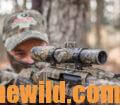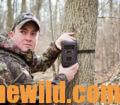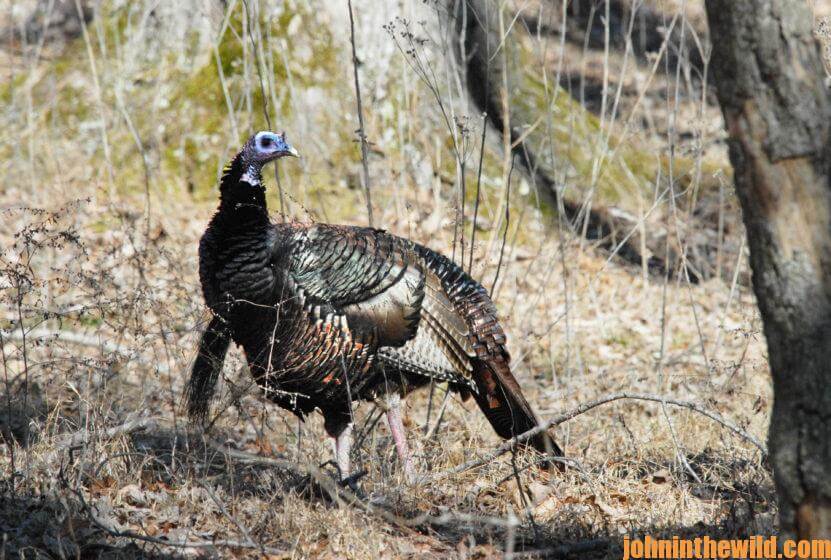Editor’s Note: Each turkey hunter has his or her own personality and preferences for how to hunt gobblers. Here’s a look at the various tools you need to take a tom.
Muzzleloading:
Muzzleloading for gobblers is usually done by someone who enjoys determining the powder charge, the shot size and the amount of shot that he uses to take the turkey. But spending time on the pattern board develops the real skill of muzzleloading. Generally, the blackpowder shooter must have the turkey closer than 40 yards. Muzzleloaders also must contend with the fact that since there’s a slight delay from the time the percussion cap hits to when the gun fires, the 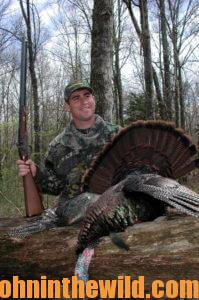 turkey may be spooked. However, bagging a tom with a muzzleloader is romantic. It’s a type of hunting that’s traditional and recalls the way our forefathers took wily gobblers when they first reached North America.
turkey may be spooked. However, bagging a tom with a muzzleloader is romantic. It’s a type of hunting that’s traditional and recalls the way our forefathers took wily gobblers when they first reached North America.
Many hunters prefer the double-barreled muzzleloader because it gives them two shots at a gobbler. Oftentimes that second shot is critical to bringing a bird down. A double barrel has two cylinders. Besides being an excellent turkey shotgun, this particular weapon is also suitable for firing a 60-caliber patched roundball for deer hunting. With the double-barreled shotgun, you have both a roundball gun (a blackpowder gun for hunting deer) and a scatter gun (a blackpowder gun for hunting turkeys). A percussion cap blackpowder shotgun allows you to hunt the old way, and many of the guns come with screw-in chokes, which gives you the option of hunting with an improved, a modified or a full choke.
How to Decide on the Charge for Muzzleloading Turkeys:
In all muzzleloading shotguns, you have the option of either using Pyrodex, a synthetic propellant, or the more-traditional black powder. If you’re planning to use Pyrodex, RS-rifle powder is recommended for turkeys. If you’re shooting black powder, use FF black powder. On all blackpowder shotguns, you should load by volume with equal volumes of shot and powder. Using a volume metric measure, a light load is considered 1 ounce of shot and 1 ounce of powder. The maximum recommended by most companies is 1-1/4-ounces each of shot and powder.
Although most hunters with black powder will want the heaviest load possible to get more powder and shot to the bird, if they’ve never shot a blackpowder shotgun before, they’ll soon learn that these guns can rattle their fillings loose when they begin to take the recoil. Since they’ll have to pattern the gun and then be required to shoot that gun at a turkey, they may prefer to shoot either the 1-ounce or the 1-1/8-ounce load rather than the maximum load. Even if a hunter can handle the recoil, when he or she shoots a heavier load and expects the gun to kick, he may flinch at the shot and pull the gun off the turkey. Many experts feel that shooting a lighter load that won’t cause hunters to flinch will insure their accuracy better than shooting the maximum load. To get the best results, pattern the shotgun first with a 1-ounce load, and then begin using the heavier loads if you wish. The heavier loads will give you a denser pattern at a greater distance than the lighter loads will.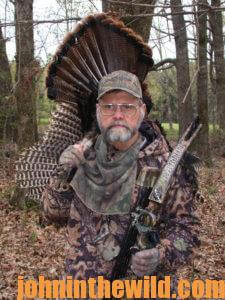
Two different systems are utilized for loading blackpowder shotguns. The one-piece plastic-wad system, which consists of a 12-gauge plastic wadding cup that can be bought at any sporting-goods store, is rammed down the barrel and over the powder. Once this plastic-wadding shotcup is in place, the pellets are poured in, and a paper overshot wadding is rammed down over the top of the shot. Easy and quick, this system doesn’t require the hunter to carry as much stuff in his pockets as with other types of loading.
The independent wad system includes an over-the-powder wad, which is a disk of very, very firm cardboard about 1 inch in circumference. Hunters pour the shot in and then add a paper overshot wad. Many hunters prefer the 1-piece plastic-wad system for several reasons. The plastic wad usually has a cushion between the powder and the shot, which acts as a shock absorber and reduces the shock from the powder to the shot before the shot leaves the barrel. This cushioning of the initial blast helps to reduce the amount of shot deformity that occurs when the charge goes off, and the pellets are compressed against one another. A deformed shot doesn’t fly straight, and the pattern tends to open out more, than if the pellets remain round. The plastic cup also prevents the shot from hitting the sides of the barrel of the gun as the shot exits the gun, which aids you in shooting a tighter pattern. Many hunters believe that No. 6 shot size is as small as the turkey hunter should consider. If the blackpowder turkey hunter is shooting a full choke gun, he even may be able to shoot No. 5s or No. 4s – depending on how the gun patterns.
The ultimate challenge for many hunters is to take an ole smart gobbler with a bow and arrow. The bowhunter puts all of the odds in the gobbler’s favor. To compensate he must be:
* a proficient woodsman because once he locates the turkey, he must determine where he can set-up a stand where the turkey naturally will want to go.
* able to have a blind that will hide his movements as he draws the bow and still provide an opening through which he can shoot. 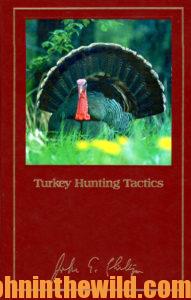
* able to hold his shot until the gobbler is in exactly the right position, so that when he lets the arrow fly, the bird won’t jump the string.
* able to track and recover the turkey after its hit.
To bag a turkey with a bow, the hunter needs a fast, flat-shooting bow. Like a deer, a turkey can jump the string. The bowhunter also can use an arrow stopper behind his broadhead to keep the arrow in the bird once the hit is made. A string tracker is also helpful, since a gobbler will often run or fly after he’s hit. Rarely will a turkey go down immediately. Even if the string tracker breaks, it will lay-down a course that a hunter can follow to find his bird.
To learn more about turkey hunting, check out John E. Phillips’s book, “Turkey Hunting Tactics,” at http://amzn.to/WkbUE9, and available in Kindle, print and Audible versions.
Tomorrow: Learning More Tools to Hunt Turkeys Successfully

